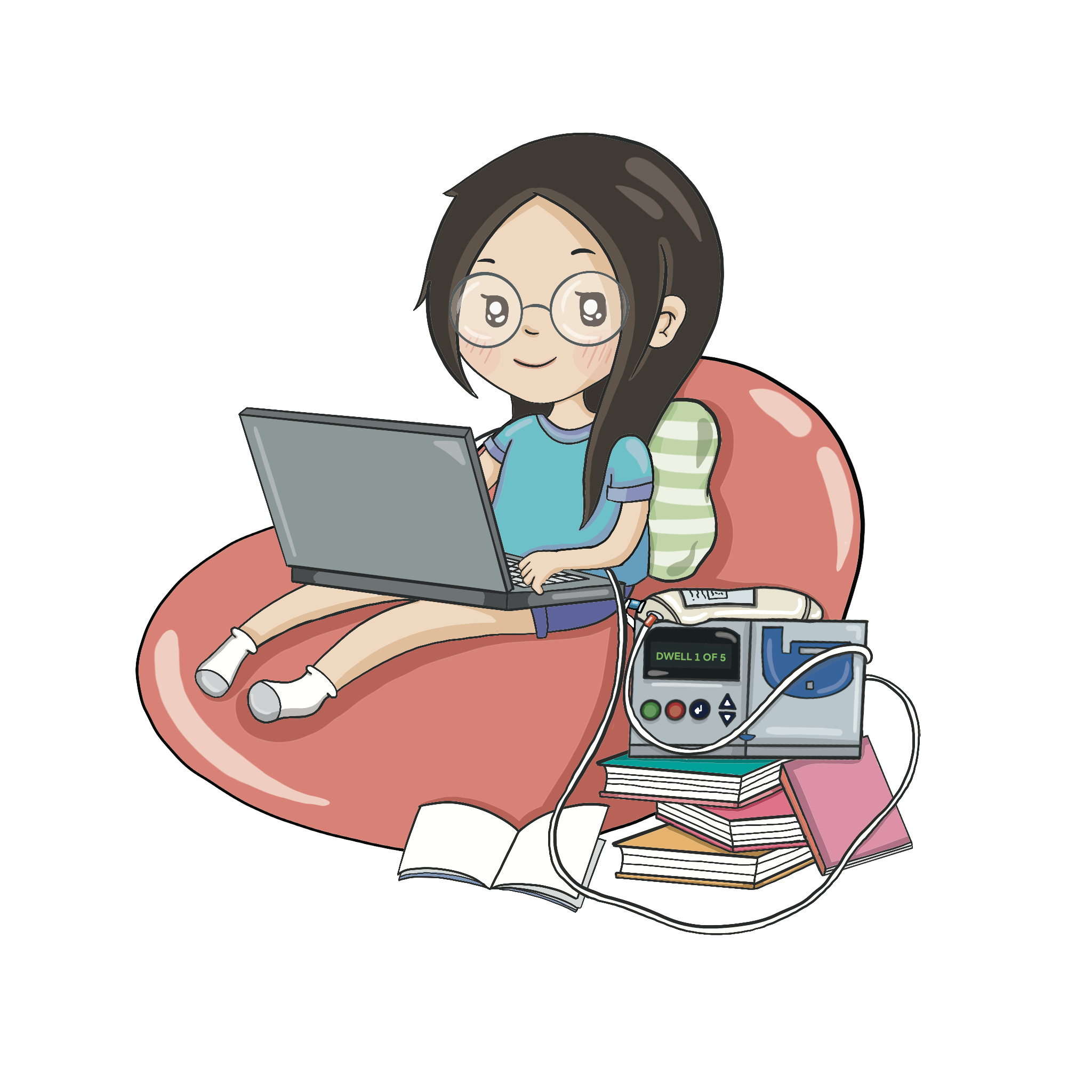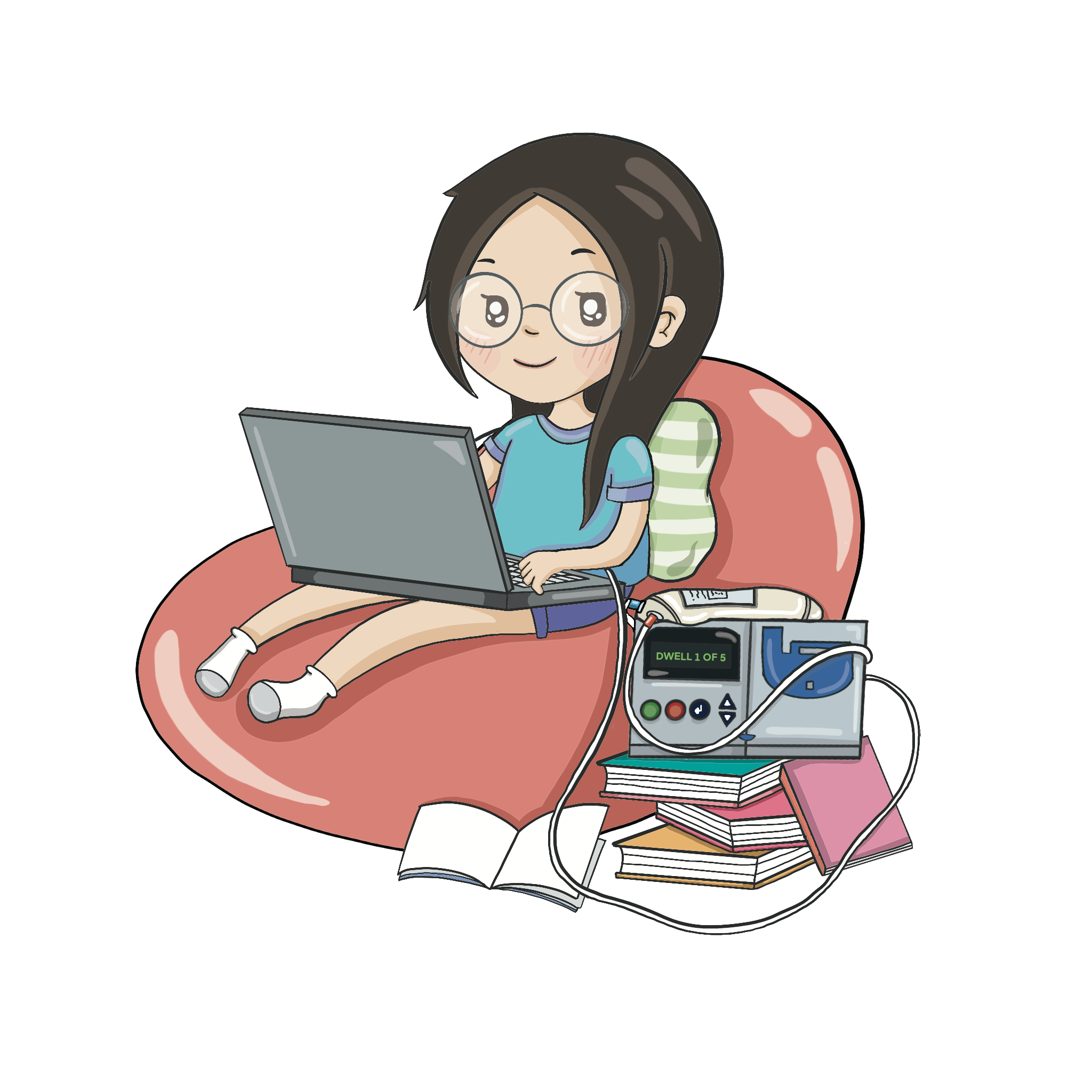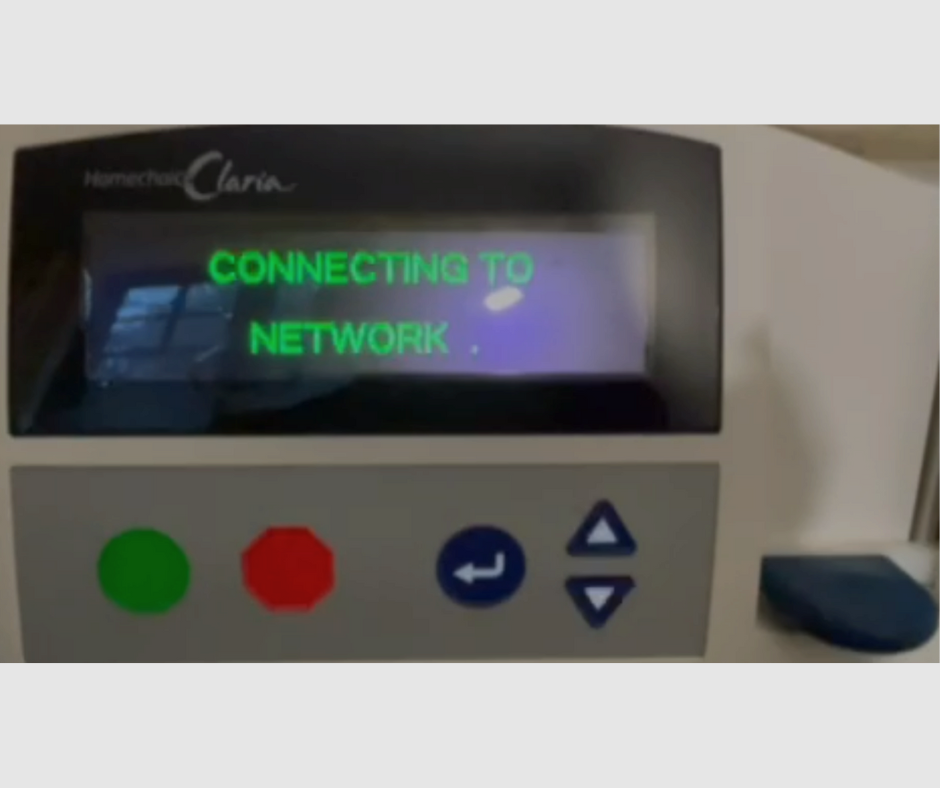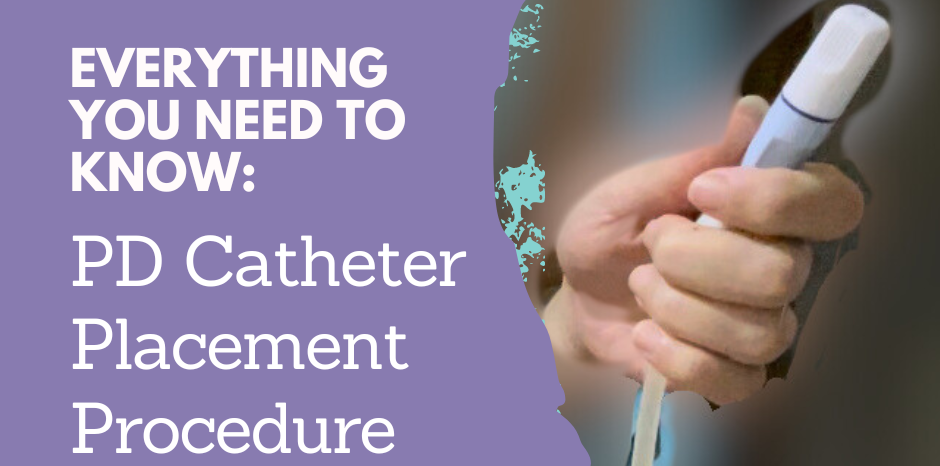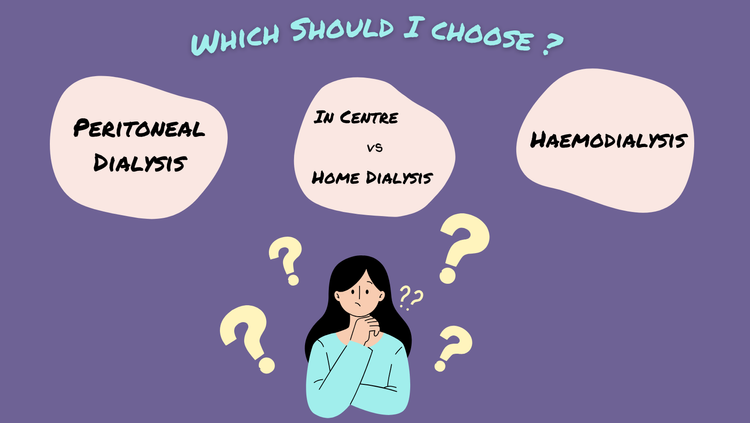How to Correct Alarms on the Baxter Homechoice Claria Automated Peritoneal Dialysis Machine / Cycler
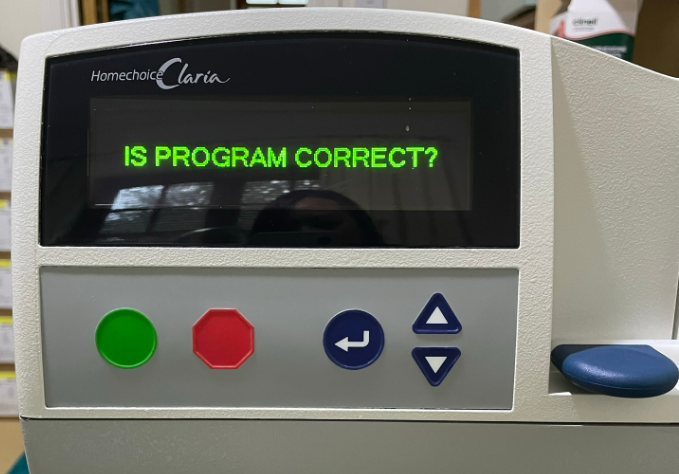
I meet a lot of prospective dialysis patients who are concerned about choosing home peritoneal dialysis because they worry about what if a complication occurs at home in the middle of the night. In this post, I will hopefully assuage some of these concerns and give some insight on how even if you dialyse alone, you are capable of resolving most of the technical problems that may arise in the night!
Homechoice Claria Machine
The Homechoice Claria is I believe the most common model from Baxter that is loaned to home peritoneal dialysis patients and is the model that I have. There are other machines out there both different models of the Baxter machines but also another machine supplied by Freesenius.
In this post I will only be concerning myself with the Baxter Machines, specifically my machine the Homechoice Claria APD Machine.
Don't Panic, You Can Do This!
The first time you experience an alarm on the machine can be quite scary and well alarming haha. The machine will beep incessantly and loudly at you until you silence it. This is because it has to be annoying and loud enough that you take notice to correct the alarm or even wake you up from deep sleep if it occurs during the night!
Once you have silenced the alarm and are fully awake, you can take note of whatever message is displayed and act accordingly:
(1) Refer to the Patient At-Home Guide by Baxter
(2) Refer to the Patient At-Home Guide by Baxter ONLINE
(3) Calling the Baxter Helpline on the Machine
(1) Refer to the Patient At-Home Guide by Baxter
Every machine comes with a chunky manual for their dialysis machine and it can be tempting to put that in some dusty corner or at the bottom of your wardrobe but I highly recommend you place it in reach of your place of dialysis.
I would even go so far to say as in reaching distance from your bed.
Turn to:
The first place I look is the Contents page and skim through the subsections of Chapter 15 because there is a list of all the typical Alarm displayed messages that you may encounter.
From there, there are STEP BY STEP guides on how to resolve it and this includes if necessary call numbers to Baxter Support or Advice to call your Night Nurse on call.
I would say 80% of the time this has been sufficient in resolving all my issues. It's quite a rewarding to be able to get the dialysis machine to bend to your will at 2 am.
(2) Refer to the Patient At-Home Guide by Baxter ONLINE
There was one instance where, I wasn't able to find the displayed message on the contents page or through flicking through the pages of chapter 15. Hence, I would turn to Google Search:
Google does always seem to pop up with the instructions on how to resolve.
I would caution using this method as your first option because sometimes you do have trawl through a lot and it's actually much faster by using the physical manual. Especially as you will have the correct manual for your model machine. Although most Baxter models have the same procedures.
(3) Calling the Baxter Helpline on the Machine
I've used the Baxter Helpline a handful of times during my 3 years on dialysis and I have always found them very patient and helpful. I have only ever called in the night between 11pm to 3am and I am always met with an operator who is seemingly based in the USA, just judging by their accent.
So you don't have to fear that they will be as bleary eyed as you are!
A typical call will be to explain your problem. They seem to follow a conversation rubric to narrow down what could be causing the problem if it isn't entirely clear and will give instructions over the phone on how to resolve this issue.
These instructions are as detailed as in the manual and obviously you can always verify on the phone any questions. The phone calls are toll free so don't have any fear in calling even if you have minor questions about your machine.
If the situation cannot be resolved, the operator will tell you step by step how to disconnect safely from the machine during mid cycles. This can be a bit complicated if you are in a particularly stubborn system error.
Why Don't I Call the Hospital or PD unit?
In the beginning, I did used to call the nurses but like I said a lot of the alarms come in the middle of the night and at my hospital there are no peritoneal dialysis specialists on call at night! The nurses in the renal wards only know basic knowledge of PD and often cannot give you the step by step instructions you need.
Furthermore, even if you receive a nephrologist or doctor on the call, they may not even have the answers as doctors deal with patients not machines!
Hence I urge you to consider going through the first three options when faced with an alarm!
Why Do I Have to Correct the Alarm, Even After Silencing?
Well, even if you have managed to turn off the annoying alarm. The problem with the machine still persists. Effectively, your dialysis has stopped midcycle and will not move onto the next cycle: Fill, Dwell, Drain.
If left unresolved, the machine will begin beeping again. Effectively, you have snoozed the alarm and you will have to face doing something eventually.
Can I Just Disconnect?
Yes, a lot of the advice that the night shift renal ward nurses will give is to just safely disconnect yourself and then call the daytime PD nurses in the morning. I believe the night nurses do have a basic manual that will allow them to coach you through that basic process.
However, it is also in the manual!
15.10 Emergency Disconnect Procedure
The only issue I take with this is that it is a very passive response to the problem, that potentially you will come across again in the future! Moreover, more often than not these display messages are commonly found in the Manual or Online Manual and can be easily fixed by yourself.
Also, I take issue with missing even half a dialysis session. Yes, you can do it but for me I need the consistency of clearing my internal system out every night to perform my daily tasks at work. I found a half night on dialysis left me feeling sick for more than a day or two!
Why Don't they Tell Us This During Patient Training.
They don't necessarily train you on these kind of problem solving procedures during the Peritoneal Dialysis training session, mainly because they're pressed for time and the emphasis is mainly on hygiene, set up, break down and disposal.
Moreover, it is not a common occurrence and supposedly doesn't warrant the time for a twice a year event. You could probably just skip a day.
However, I hope I can reassure you that using the manual is as easy as finding a recipe in a cookbook or using a dictionary and there is always that Baxter Helpline if you prefer a human to coach you through it instead.
Feeling Anxious - Look At The Manual Ahead of Time
If you're still in the decision making process, just ask one of the nurses to give you a copy of the manual to flick through for 5 minutes. Look at how the manual is laid out and look at one of the correcting alarms pages.
You will see that this manual is DESIGNED FOR PATIENTS and patients with no knowledge. They make it very procedural with plain English in BIG FONT!
I also recommend to patients when they first receive the manual at home to open it and just like I said flick through it. There is A LOT of information in there from what the machine does to customising brightness and sound. It's good to have a look at the general contents page just so you have some kind of reference of things that you could do to adjust your machine should you wish!
There's also a handy Glossary which actually helped me to decode some of the jargon that my medical team were using when speaking to me about my dialysis results in the early months.
Concluding Remarks
I hope I have given some idea of how useful the Peritoneal Dialysis Machine Manual is and how even if you are alone and have trouble on the machine, there are many resources available to help you through the night.
Furthermore, after your first few alarms, you will start to just assimilate the way to navigate the machine and you can button bash your way through to a Bypass i.e force the machine to the next stage of dialysis!
Of course this guide only covers the alarm display messages, if you experience anything like a medical emergency, please contact the appropriate health professionals. As always I am not a medical practitioner but just another dialysis patient sharing their experience of home dialysis.
Wishing you the best of luck on Home Peritoneal Dialysis and many good night sleeps ahead!
Lai x
Consider following me on
💜Instagram: @My_Kidney_and_Lai
🧡YouTube: My Kidney and Lai
